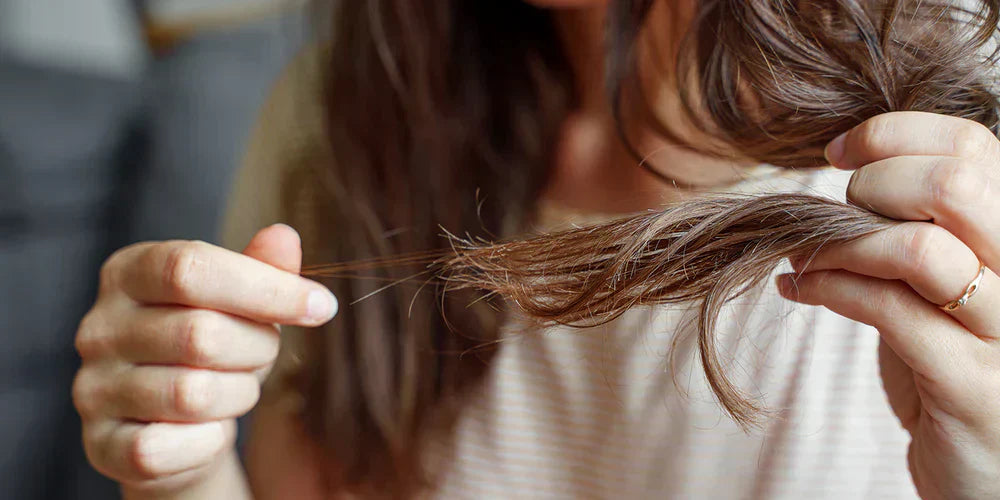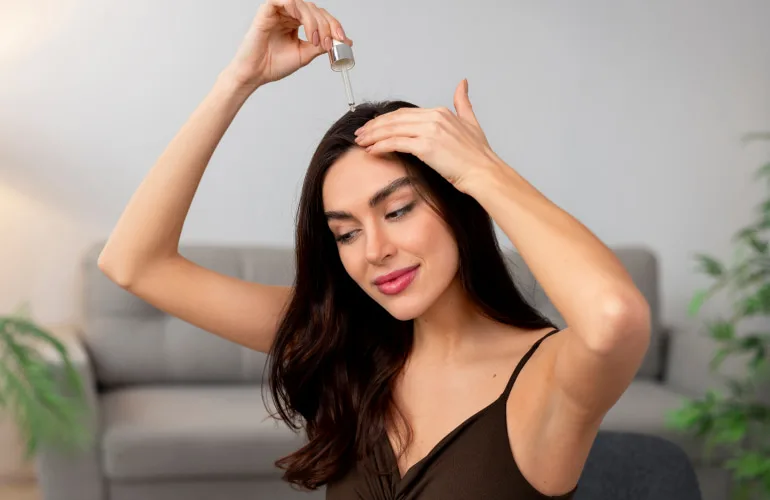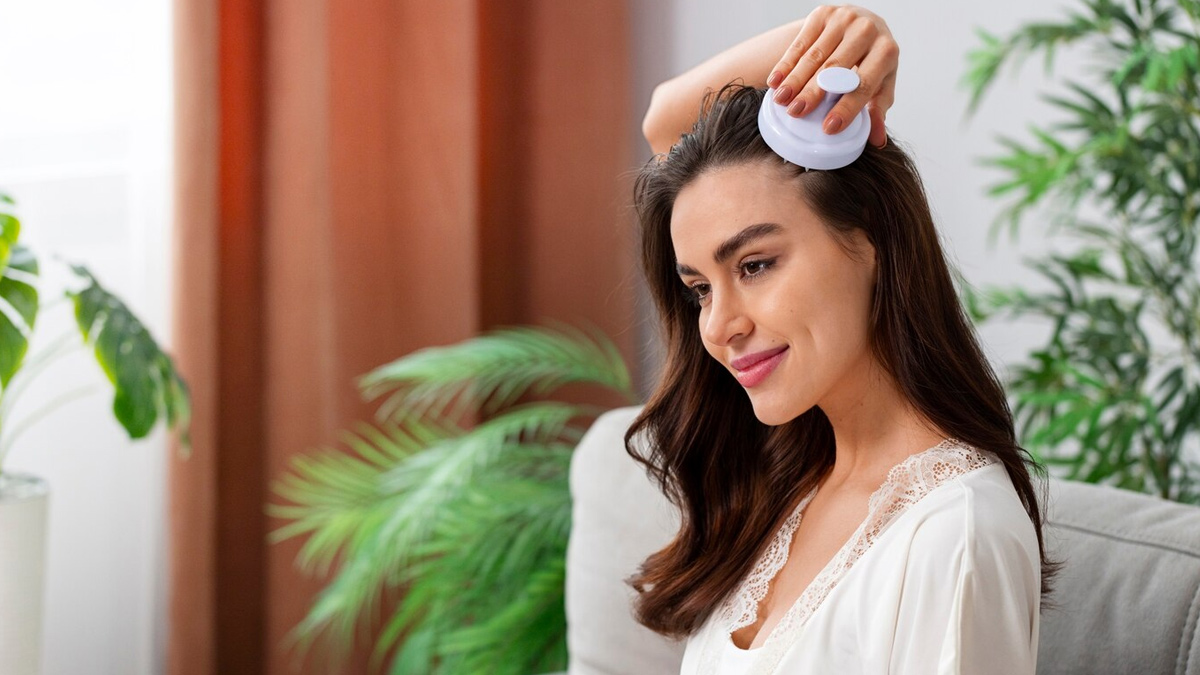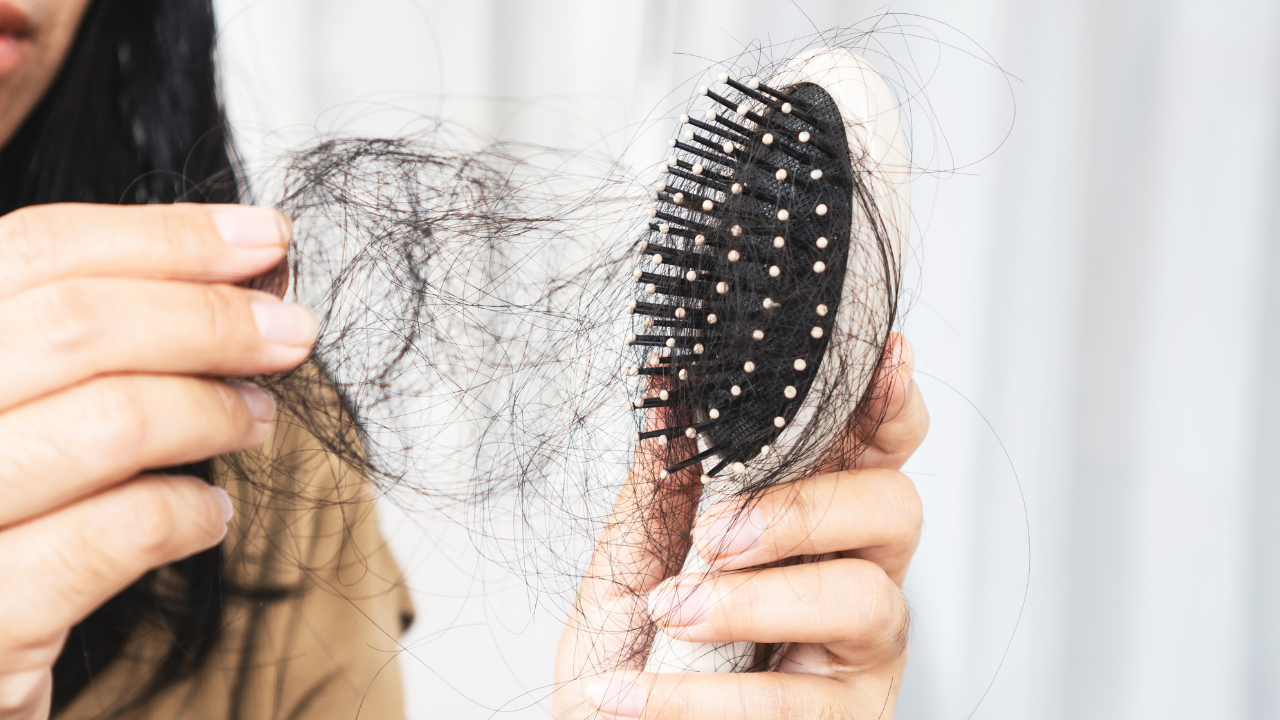
Vitamin D & Hair Loss: Why Deficiency May Be Sabotaging Your Hair Growth (And How to Fix It)
Share
For many people, hair isn’t just about looks — it’s confidence, identity, and self-expression. So when your ponytail feels thinner or the shower drain fills up faster than usual, it’s natural to worry. While stress, hormones, and genetics often get the blame, research shows that a simple nutrient deficiency — vitamin D — can quietly trigger hair shedding and thinning.

Vitamin D is often nicknamed the “sunshine vitamin” for its well-known role in bone health, but its influence on hair growth is just as powerful. Low levels may push your follicles into hibernation, slow new growth, and even worsen autoimmune hair loss conditions.
Let’s dive into what vitamin D really does for your hair, why deficiency is more common than you think, and science-backed ways to bring your hair back to life.
Why Vitamin D Is Essential for Healthy Hair
Vitamin D does more than keep your bones strong — it’s an active signal for hair follicle growth and renewal.
- Activates hair follicle stem cells so they can produce new strands.
- Regulates the hair growth cycle, helping follicles stay in the growing (anagen) phase longer.
- Supports scalp immune balance, reducing inflammation that damages follicles.
When your vitamin D levels dip, follicles may enter a “resting” phase too early — leading to fewer new hairs growing while older ones shed. Over time, this can mean thinning hair, patchy spots, and loss of volume.

A 2022 review in the Journal of Cosmetic Dermatology found that people with chronic hair loss had vitamin D levels up to 60% lower than those without thinning hair.
The Science Behind the Shedding
Your hair grows in cycles:
- Anagen (growth)
- Catagen (transition)
- Telogen (rest/shedding)
Vitamin D tells follicles to stay in anagen. Low vitamin D flips the switch early, causing strands to fall out before they’re ready.
It also affects your immune system. When deficient, the risk of autoimmune hair disorders such as alopecia areata rises. In these cases, your immune system mistakenly attacks your follicles, leading to round bald patches.

Simply put: without enough vitamin D, your follicles slow down, rest too long, and can even become targets for your immune system.
Why Vitamin D Deficiency Is So Common
Think you’re safe because you get some sun? Modern life makes deficiency easy:
Sunscreen Sabotage
SPF protects your skin — but it also blocks UVB rays your body needs to produce vitamin D. Sunscreen with SPF 30 can cut vitamin D synthesis by 95%.
Indoor Lifestyle
The average adult spends 90% of their day indoors. Between offices, remote work, and digital entertainment, we rarely get direct sunlight.

Limited Food Sources
Vitamin D is scarce in food. Fatty fish (salmon, sardines), egg yolks, and fortified dairy help, but most people can’t meet the 600–800 IU daily recommendation through diet alone.
Skin Tone & Geography
People with darker skin tones produce less vitamin D naturally. Living in northern latitudes or areas with long winters also limits sun exposure.
Globally, more than 1 billion people are vitamin D deficient. In the U.S., about 42% of adults don’t have adequate levels.
How to Restore Vitamin D for Hair Growth
The good news: this is one of the easiest hair loss triggers to correct.
Get Your Levels Tested
Ask your doctor for a 25-hydroxy vitamin D blood test. Ideal levels for hair health are usually 30–50 ng/mL.
Supplement Strategically
Most adults need 1,000–2,000 IU of vitamin D3 daily for maintenance. Severe deficiencies may require higher doses under medical supervision.

- Choose vitamin D3 (cholecalciferol) — it’s better absorbed than D2.
- Pair with meals containing healthy fats for best absorption.
Combine With Hair-Friendly Nutrition
Protein, iron, zinc, omega-3s, and antioxidants (vitamins C & E) all help follicles thrive.
Stay Consistent
Hair growth is slow. Expect 3–6 months of regular vitamin D use before noticing thicker, healthier strands.
Tip: If you’re vegan, look for vitamin D3 made from lichen — it’s plant-friendly but highly bioavailable.
Why Fixing Vitamin D Can Be a Game Changer
- Improved density: Awakens dormant follicles.
- Less shedding: Keeps hairs in the growth phase longer.
- Healthier scalp: Balanced immune response means fewer flare-ups and irritation.
Many people notice reduced shedding and stronger regrowth after correcting deficiency — especially when paired with a balanced diet and stress management.
Vitamin D Deficiency Hair Loss vs. Hormonal Hair Loss — How to Tell the Difference
Not all hair loss is created equal. While low vitamin D can cause shedding, other hormone-related issues can look similar. Here’s how to spot the difference:
| Feature | Vitamin D Deficiency | Hormonal Hair Loss (Thyroid, PCOS, Postpartum, Menopause) |
|---|---|---|
| Pattern | Diffuse thinning all over scalp (even shedding) | Can be patchy (thyroid), temple thinning (postpartum), or top-of-scalp widening (androgenic/PCOS) |
| Onset | Gradual, worsens over months | Sudden after childbirth, menopause, or thyroid imbalance |
| Other Symptoms | Fatigue, low mood, bone/joint aches | Irregular periods (PCOS), weight changes (thyroid), hot flashes (menopause) |
| Scalp Health | Usually normal | Can be dry/flaky (thyroid), oily (androgenic) |
| Blood Work | Low vitamin D (<30 ng/mL) | Hormone imbalances (TSH, free T4/T3, estrogen, testosterone) |

- Vitamin D loss: Often shows as overall thinner ponytail, more hair in shower or brush, but no clear bald patches.
- Hormonal loss: May cause patterned thinning (widow’s peak widening), patchy bald spots, or dramatic post-pregnancy shedding.
Tip: If your hair loss came after major life changes (childbirth, menopause, thyroid issues) or shows a specific pattern, ask your doctor to check thyroid hormones, estrogen, and androgens in addition to vitamin D.
Key Takeaway
- Vitamin D deficiency = slow, steady thinning with weak regrowth.
- Hormonal shifts = patterned or event-triggered shedding.
- Testing both vitamin D and hormones helps you get the right treatment faster — saving time, money, and hair.
Take Action for Healthier Hair Today
Vitamin D deficiency is a silent but powerful cause of hair thinning. Testing your levels and supplementing smartly could be the first step toward restoring volume and confidence.

If you’re looking for science-backed solutions to support your hair’s recovery — from targeted supplements to scalp-friendly products — explore:
👉 Rejuvessencee’s Hair & Wellness Collection
Their carefully formulated products can complement your vitamin D journey and help nourish hair from root to tip.
FAQs
1. How do I know if my hair loss is caused by vitamin D deficiency?
Symptoms often include diffuse thinning (all over the scalp), slow regrowth, and brittle strands. A blood test is the only way to confirm deficiency.
2. Can vitamin D supplements really regrow hair?
Yes — if your hair loss is linked to low vitamin D, correcting levels can restart growth. However, results vary and may take 3–6 months.
3. How much vitamin D should I take for hair health?
Many adults take 1,000–2,000 IU daily. If your levels are very low, your doctor may prescribe higher doses short-term.
4. Can too much vitamin D cause problems?
Yes. High doses can lead to toxicity (nausea, weakness, kidney issues). Always test first and follow professional guidance.
5. What other nutrients support hair growth?
Protein, iron, zinc, omega-3 fatty acids, biotin, and antioxidants all help hair grow stronger and resist breakage.
6. Will sun exposure alone fix my deficiency?
It helps, but factors like sunscreen, skin tone, and indoor living often make sunlight alone insufficient.
Disclaimer:
The information provided on this website is for educational purposes only and is not intended as medical advice. It should not be used to diagnose, treat, cure, or prevent any health condition. Always seek the guidance of your physician or other qualified health provider with any questions you may have regarding your health, medical conditions, or before making any changes to your diet, supplements, or treatment plan. Never disregard professional medical advice or delay seeking it because of something you have read here.
